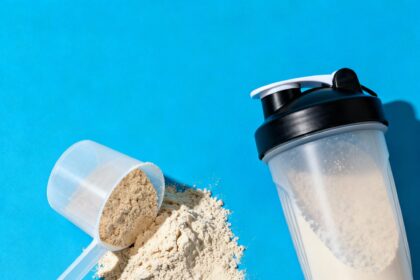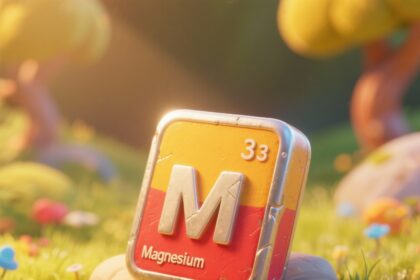By Kaley Freehill
Introduction: Understanding Muscle Growth
When it comes to training an athlete, there has been a great deal of research regarding performance and exercise. Every athlete is not the same, so there are different physiques and learning styles for each athlete you are training. When properly training, muscles increase size, volume, and strength through a process known as hypertrophy. There are two different methods of hypertrophy that need to be addressed: sarcoplasmic and myofibrillar. By going through a training program, athletes can benefit from muscular growth, strength gains, and helping to prevent injuries.
What is Hypertrophy?
According to a 2019 study, hypertrophy is an increase and growth of muscle cells or tissues based on exercise. “During exercise, our nerve impulses cause muscle contractions and continuous muscle contractions lead to an increase in protein synthesis and gains in muscle strength and size over time.”
Our bodies go through a stimulation and repair process when repeatedly exercising and resting. “Exercising provides stimulation through muscle contractions and because of the repetitive movement, it causes damage to our muscle fibers. Afterwards, muscle growth occurs during the repair process of the broken-down muscle fiber.” Once allowing the body to rest, new muscle fibers repair the damage.

Benefits of Muscle Hypertrophy
A 2017 study outlined some of the benefits of muscular hypertrophy. They include “increasing muscle fiber size, work capacity, explosive strength, decrease body fat, growth in fast twitch (Type IIa and IIb) muscle fibers, and few (if any) detrimental effects on endurance capacity.”
Athletes tend to use resistance training as a primary method to experience hypertrophy. A 2020 study stated that resistance training helps increase muscle mass and develop strength. “By increasing ones’ muscle size, the contractile elements also increase along with volume of sarcoplasmic fluid within the muscle cell itself.”
Although there are some health concerns, a 2019 study suggested “Having low levels can increase a risk in several diseases: cardiovascular disease, cardio-metabolic risk in adolescents, Type-2 diabetes in middle aged or older adults.” However, hypertrophy can help muscles grow and increase in strength, despite having some minor associated health concerns.
Sarcoplasmic Hypertrophy: Focus on Muscle Size
Sarcoplasmic hypertrophy focuses on muscle size. A 2018 study defined sarcoplasmic hypertrophy as “an increase in the volume of the sarcoplasmic fluid in the muscle cell, with no increase in muscular strength.”
Sarcoplasm contains ATP, glycogen, creatine phosphate, and water, which help increase the volume in a cell. For training, athletes aiming for sarcoplasmic hypertrophy should work out at a high level with short rest periods (around 60 seconds), completing 8 to 15 reps for 3–4 sets, and training opposing muscle groups to reduce strain.
The 2018 study stated that bodybuilders often focus on size and symmetry rather than strength. With sarcoplasmic hypertrophy, muscles adapt for endurance rather than maximum strength, adding volume but not functional mass.

Myofibrillar Hypertrophy: Focus on Muscle Strength
Myofibrillar hypertrophy involves increasing muscular strength and the number of myofibrils. A 2019 paper described myofibrils as strands in skeletal muscle that contract and form more contractile proteins.
When muscles contract repeatedly, fibers increase in density and size, leading to greater strength. This type of hypertrophy is better for strength athletes. Training involves heavy compound lifts (squats, deadlifts, bench presses, rows, overhead presses) with low reps (1–5) and longer rest periods (3–5 minutes).
Powerlifters typically focus on this type of hypertrophy, prioritizing strength over size. Here, actin and myosin proteins increase, leading to greater strength output along with modest muscle growth.
Role of Resistance Training
Resistance training is the main method to develop hypertrophy. Athletes use it to build muscle strength, mass, endurance, and skeletal muscle size. A 2021 paper highlighted benefits such as better muscle tone, fat reduction, improved bone density, mental health, and sleep quality.

Preventing Injuries During Training
With caution in mind, there are ways to help prevent injuries. An important step is warming up properly. According to a 2016 paper, ten strategies can reduce injury risk:
- Warm up
- Plan training
- Maintain nutrition balance
- Use progressive overload
- Train the spine
- Focus on movement patterns
- Avoid poor form (“ugly reps”)
- Use proper intensity
- Recover on off days
- Be self-sufficient
Even with prevention strategies, injuries can still occur, so it’s crucial to train smart and pain-free.
Conclusion: Building Strength Safely
Muscle hypertrophy plays an essential role in athletic performance, strength, and health. Whether aiming for size (sarcoplasmic hypertrophy) or strength (myofibrillar hypertrophy), athletes should use structured resistance training while prioritizing injury prevention for long-term success.
References
Brandeau, Mary (2020) Strength Training vs. Weight Training: What’s the Difference? Fitbod
Dewar, Mike (2017) Why Fitness Athletes Should Focus on Hypertrophy Barbend
Heath, Steph (2021) Why You Need to Start Resistance Training Now everyoneactive
Heywood, Mark (2018) Sarcoplasmic vs Myofibrillar Muscle Growth: What’s the Difference? Myfitness
Magnante, Matthew (2020) What Is Muscle Hypertrophy and Why It’s Important for You to Know FitnessVolt
Michal Krzysztofik,* Michal Wilk, Grzegorz Wojdała, and Artur Gołaś (2019) Maximizing Muscle Hypertrophy: A Systematic Review of Advanced Resistance Training Techniques and Methods Int J Environ Res Public Health. 16 (24): 4897
Mutia, Maria (2019) The Two Types of Muscle Hypertrophy, Training for Size Versus Density Live Your Life on Purpose
Rusin, John (2016) 10 Commandments of Injury Prevention TNation
Shimdt, August (2020) A Practical Guide to Hypertrophy IronAthlete







































